Cons
-
Not for dedicated gamers
-
Picture is too cool
-
Narrow viewing angle
The Plus Series is best suited for 4K newcomers.
Being a Roku TV, the Plus Series is backed by our favorite smart platform. The Roku experience is fast, easy to familiarize yourself with, and incredibly flexible when it comes to app support. The Plus Series is also bright enough to hold up during daytime viewing, and thanks to decent overall contrast, its picture quality should satisfy those looking to upgrade to 4K for the first time.
Unfortunately, people looking for the best possible performance in this price bracket might be underwhelmed by the Plus Series. Some similarly priced TVs deliver a wider toolset of gaming-related features, higher brightness, or both. Even the Plus Series’ best feature—its integrated Roku smart platform—can be found in some of its most comparable competitors.
The Plus Series QLED is best suited for shoppers who’ve been putting off buying a new TV for fear of facing a deluge of confusing technical terms. If your goal is to maximize your dollar on performance and features, however, there are some enticing alternatives.
About the Roku Plus Series TV
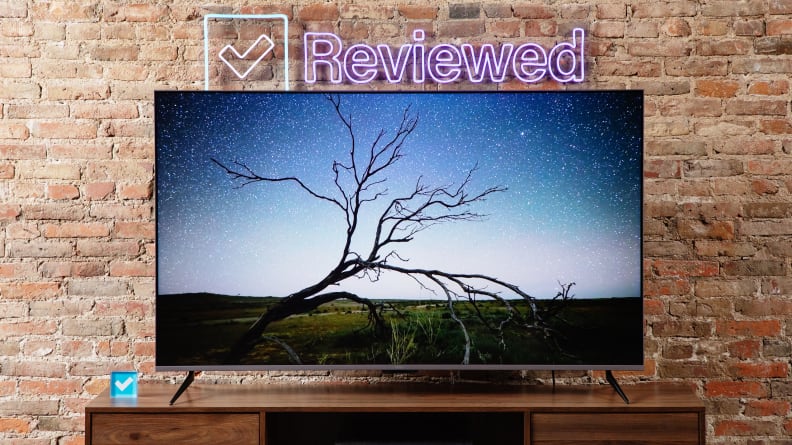
Credit:
Reviewed / Timothy Renzi
The Roku Plus Series comes in three sizes—55, 65, and 75 inches.
The Roku Plus Series is available in just three sizes ranging from 55 to 75 inches. Our review unit is a 65-inch model that we received on loan.
Here’s how the series shakes out in terms of pricing:
At the time of publishing, all three size options are significantly discounted. Prices are bound to fluctuate throughout the year, however, so there’s no guarantee that these discounts will still be available by the time you’re reading this.
Roku Plus Series TV Specs
The Roku Plus Series TV comes with an upgraded version of the standard Roku remote control that comes with most Roku streaming boxes. It’s called the Roku Voice Remote Pro, and unlike the standard Roku clicker, it runs on a rechargeable battery (powered by a mini-USB-to-USB-A cable, included in the box). I love the low-waste, high-convenience factor of a remote control with a rechargeable battery, but I recommend giving it a quick charge prior to setting up the TV; mine was in the red within minutes of turning on the TV.
As the name suggests, the Roku Voice Remote Pro also features a built-in microphone for voice commands, should you feel like taking advantage of it. There’s also a lost remote finder feature that helps you locate the remote if it’s fallen between couch cushions or underneath the coffee table. This feature can be activated by voice command or via the Roku mobile app.
Roku Plus Series TV Connectivity
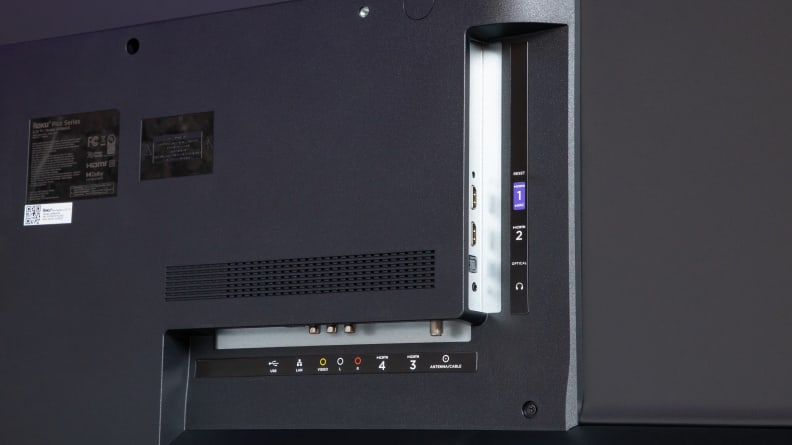
Credit:
Reviewed / Timothy Renzi
There are four HDMI inputs, all 2.0.
The Plus Series is outfitted with the expected variety of inputs from a mid-range TV focused on streaming simplicity. There are four HDMI inputs, but none of them are HDMI 2.1.
Here’s what you’ll find in an L-shaped cutout on the back of the Plus Series’ panel:
- 4x HDMI 2.0 (4K @ 60Hz)
- 1x USB 2.0
- RF connection (cable/antenna)
- Ethernet (LAN) input
- Digital audio output (optical)
- Composite input
- 3.5mm headphone jack
Roku Plus Series TV Performance Data

Credit:
Reviewed / Timothy Renzi
We tested contrast, peak brightness, and color gamut coverage in HDR and SDR.
Before testing each TV, we make sure the panel is on and receiving a continuous signal for at least 2 hours. Our 65-inch Roku Plus Series received this standard warm-up time before any readings were taken. In addition, the TV received the latest firmware updates at the time of testing.
For SDR tests, we’re using the Plus Series’ Movie picture mode. For HDR tests, we’re using the Dark picture mode. We’ve chosen these settings because of their accuracy, but performance may vary depending on which picture mode is enabled. For example, you might experience a brighter picture with a different mode enabled, but it may negatively affect color temperature and overall color accuracy.
To get a sense of the TV’s average performance, we use a standard ANSI checkerboard pattern for most of our basic contrast tests. We also use white and black windows ranging from 2% to 100% to test how well the contrast holds up while displaying varying degrees of brightness.
Our peak brightness measurements are taken with sustained windows ranging in size from 2% to full screen to represent the TV’s peak brightness over a sustained period of time. Specular highlights (like brief flashes of reflected light) might reach higher brightness levels, but not for sustained periods of time.
All of our tests are created with a Murideo Seven 8K signal generator and tabulated via Portrait Displays’ Calman Ultimate color calibration software.
I’ll expand on our test results throughout the review, but for now, here are some key takeaways:
- HDR contrast (brightness/black level): 440.9 nits/0.083 nits (ANSI checkerboard)
- SDR contrast (brightness/black level): 439.3 nits/0.095 nits (ANSI checkerboard)
- HDR peak brightness (sustained): 662.4 nits (25% white window)
- HDR color gamut coverage (DCI-P3/10-bit): 90%
- HDR color gamut coverage (BT.2020): 76%
- SDR color gamut coverage (Rec.709): 96%
- Input lag (4K/60Hz): 45.6ms (Game Mode enabled), 151.8ms (Game Mode disabled)
During testing, the TV Brightness was set to Brighter. There are several options to choose from in this submenu, with the Auto option enabling the TV’s ambient light sensor. We chose Brighter not just to get a sense of the Plus Series’ peak brightness capabilities, but to ensure that its ambient light sensor wasn’t adjusting the picture based on our dark-room environment.
In addition, Micro Contrast and Dynamic Contrast were both disabled, Color Temperature was set to Warm, and the TV’s Local Dimming was set to High.
What we like
Roku is fast, flexible, and easy to use
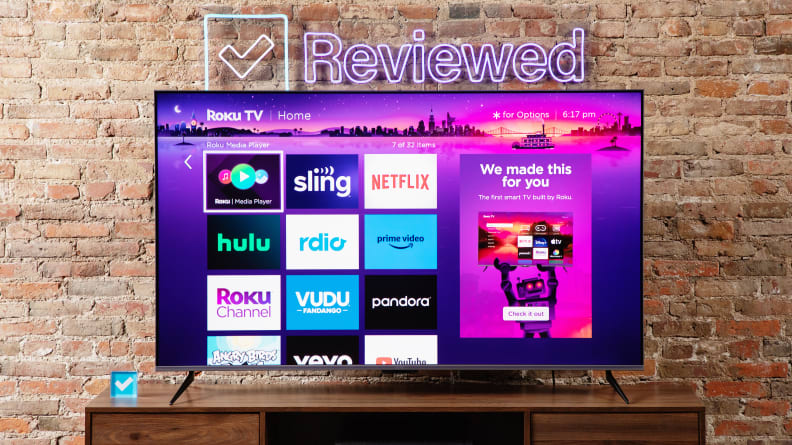
Credit:
Reviewed / Timothy Renzi
Setup is a breeze, and the interface is happily what we’ve come to expect from Roku.
Unsurprisingly, the Plus Series puts the Roku experience front and center. Every aspect of the Plus Series’ marketing campaign emphasizes the simplicity of Roku, and rightfully so—it’s a wonderfully easy platform to pick up and use on a daily basis.
Navigating the ins and outs of the software is a breeze. It’s fast, responsive, and the user interface consists mostly of big, bold buttons, making it a cinch to keep track of what you’re doing on a moment-to-moment basis.
Don’t let the simplicity of the interface fool you, though; Roku’s app support is quite robust. There are thousands of downloadable apps available in the Roku Channel Store, and nearly all of the most popular apps are accounted for. In addition, there’s typically only one advertisement on the Roku home screen at any given time, and given its placement, the likelihood of accidentally clicking it is low.
Roku has emphasized how easy it is to set up the Plus Series, and I’m inclined to agree. Once its boomerang-shaped feet are affixed to the panel—or once the panel is mounted to your wall—the Roku platform immediately boots up when the Plus Series is powered on. From there, it’s just a matter of registering the software, installing an update, and downloading an initial batch of apps, should you see fit. I don’t think the setup process is that much easier on the Plus Series than it is on most contemporary smart TVs, but the likelihood of running into any hitches is very low. Just turn it on and you’re off to the races.
Even the settings menus are easy to navigate. If you want to make any adjustments to the TV’s picture, its audio, or accessibility options, you’ll find them—they’re clearly labeled and quick to access. There aren’t many ways to meaningfully tweak the A/V settings beyond choosing a picture mode, but I imagine most folks who are considering a TV like this will find that to be a feature, not a flaw.
The Plus Series is also ready to connect to Roku-branded wireless audio equipment right out of the box, including the company’s wireless soundbar, speakers, and subwoofer, though we did not test this functionality during our time with the TV.
The best thing I can say about the Roku Plus Series experience is that it operates intuitively without getting bogged down by buggy software or a plethora of sponsored content. As a primary means of streaming TV shows and movies, the Plus Series offers one of the best user experiences in its class.
Bright and colorful enough for daytime viewing and beyond
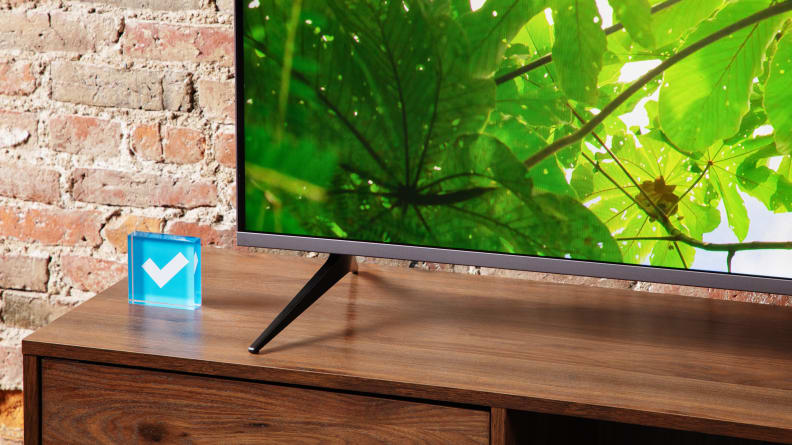
Credit:
Reviewed / Timothy Renzi
Specular highlights are bright enough for HDR to pop in a dark or moderately lit room.
A budget-oriented TV like the Plus Series doesn’t need to perform at the highest possible level—it just needs to look good enough across the board, regardless of what you’re watching and when. The Plus Series passes this test, producing a respectable picture that’s bright enough to hold up in the light of day. As long as it’s not positioned directly in a sunbeam, you’re good to go for afternoon ballgames, round-the-clock news, and midday talk shows.
If you’re dimming the lights for movie night, the Plus Series has your back, too. It’s not as high-contrast as more-expensive TVs with fancier display hardware, but its black levels are deep enough and there’s hardly any light bloom around bright-on-dark picture elements. Specular highlights—like a shimmer of sunlight on the surface of the ocean or sparks from a buzzsaw—are bright enough for HDR content to pop, too. These highlights rarely get brighter than 700 nits, but in a dim or dark room, that’s just fine.
I was also quite impressed with the Plus Series’ color performance. Its full-array LED display is outfitted with quantum dots (hence the “Q” in “QLED”). Commonly found in high-end LED TVs, this is a color- and brightness-boosting technology that elevates the Plus Series’ visual expression. According to my measurements, the Plus Series covers about 90% of the HDR color gamut (DCI-P3), which is pretty darn good for a TV in this price range. For context, the TCL 6-Series, a significantly pricier LED TV, covers about 92% of this color gamut.
Now, to be clear, the 6-Series is a much better looking TV, particularly during HDR content. It gets nearly twice as bright and features smaller LEDs, both of which have a tremendously positive impact on its picture quality. Nevertheless, the Plus Series is surprisingly adept at saturating color. I watched a handful of titles mastered in Dolby Vision and was impressed by the picture’s sheer vibrancy. Nature documentaries in particular really sung, with lush forests and exotic bird feathers taking on an appropriately vivid look.
If the software side of the Plus Series is designed to excel at the basic stuff, so too is the Plus Series’ picture. It looks good during the day and puts on a show in the dark. If you’re upgrading to 4K resolution for the first time, you’re bound to be impressed.
That said, if you’re an A/V enthusiast (or you have a passing familiarity with higher-end hardware like mini-LED or OLED displays), you’ll likely notice some of the Plus Series’ quirks. All TVs in this price range compromise on some areas of performance, and it’s worth knowing what they are.
What we don’t like
Not for picture purists

Credit:
Reviewed / Timothy Renzi
Color accuracy and motion handling fall a bit short.
Despite the Plus Series’ relatively impressive color volume, the color accuracy is a touch disappointing. Even in its best-calibrated picture modes (which aim to adhere to industry-wide standards), there’s a moderate amount of color error across the board, mostly because the Plus Series can’t help but push everything to the bluer side of things. I recommend using the TV’s Warm color temperature setting, but even then, everything looks cooler than it ought to look.
Its motion handling isn’t the worst I’ve seen at this price point, but folks who are sensitive to judder might want to head down to their local Best Buy to see the Plus Series in action before plunking down their credit card. Especially if you plan on watching movies from DVDs at 24fps.
Fast-moving action (especially camera pans) are saddled with some herky-jerkiness in most picture modes (it was especially noticeable in Movie mode), and the Plus Series doesn’t offer granular motion enhancement settings—not even by way of Roku’s optional companion mobile app. It’s a set-it-and-forget-it experience, remember, so the TV really only lets you jump from one picture mode to another, only making adjustments to the backlight if need be.
The Plus Series does a so-so job at upscaling sub-4K content. I’ve seen better upscaling in this price range (the TCL 5-Series) and I’ve seen worse (the Amazon Fire TV Omni). For the most part, full-HD (1080p) content (which still makes up the bulk of streaming content) skates by without much visual artifacting, while older 720p content often arrives with digital noise and low-light flicker.
And while it’s not exactly surprising for an LED TV in this class, it’s worth mentioning that the Plus Series’ off-angle viewing performance is rough. Once you move just 20 to 30 degrees away from a head-on position, the picture begins to look flat and washed out. This is almost unavoidable when shopping for a budget-friendly TV with limited display hardware, but it’s important to keep in mind if your goal is to secure a 65- or 75-inch TV specifically for group viewings.
Not for dedicated gamers
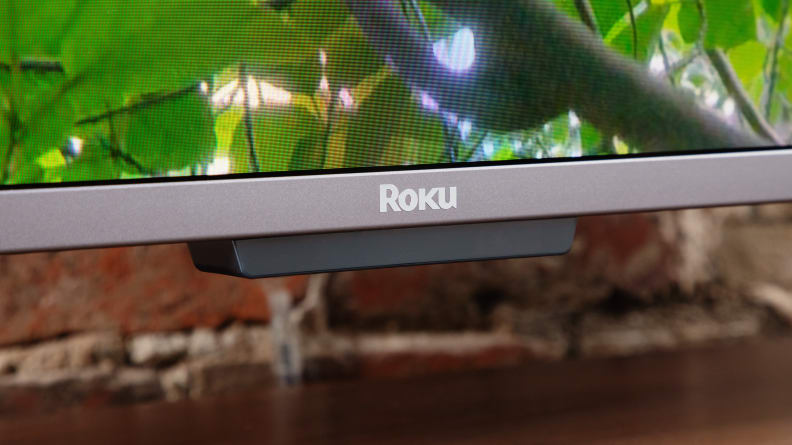
Credit:
Reviewed / Timothy Renzi
There are TVs out there better suited to a gaming-centric lifestyle.
The Roku Plus Series is a fine companion for folks who play an occasional game or two a handful of times per week, but don’t look to gain a competitive advantage by way of upgraded hardware and in-game tinkering.
While some TVs in this price bracket deliver Auto Low Latency Mode (ALLM), Variable Refresh Rate (VRR), and even 4K gaming at 120Hz (like the Hisense U7H), the Plus Series only offers ALLM, a feature that ostensibly clicks the Plus Series into its optimized gaming mode whenever a console is connected and powered on.
And while I did find a Game Mode toggle in the TV’s settings menu (as well as a toggle for Auto Low Latency Mode in its HDMI input settings menu), the Plus Series never automatically enabled the mode when my Xbox Series X was in use, even when ALLM was enabled on the corresponding input.
It’s not the biggest deal in the world to have to manually enable Game Mode, but it does suggest that the TV’s Auto Low Latency feature is not working as intended. Fortunately, Game Mode does appear to be doing something behind the scenes, as it dropped the TV’s input lag measurement with a 4K/60Hz signal from about 150ms to 45ms. It’s not as twitch-friendly as a higher-end TV, but if all you need is a decent TV to play 4K/60Hz titles, you could do a lot worse.
If you are in need of something more suited for your gaming-centric lifestyle, the aforementioned Hisense U7H is more in line with your needs. Like the Roku Plus Series, the TCL 5-Series is limited to 60Hz, but it offers ALLM and VRR, the latter of which eliminates visual artifacts like screen tearing.
Should you buy the Roku Plus Series TV?
Maybe, but explore the alternatives first
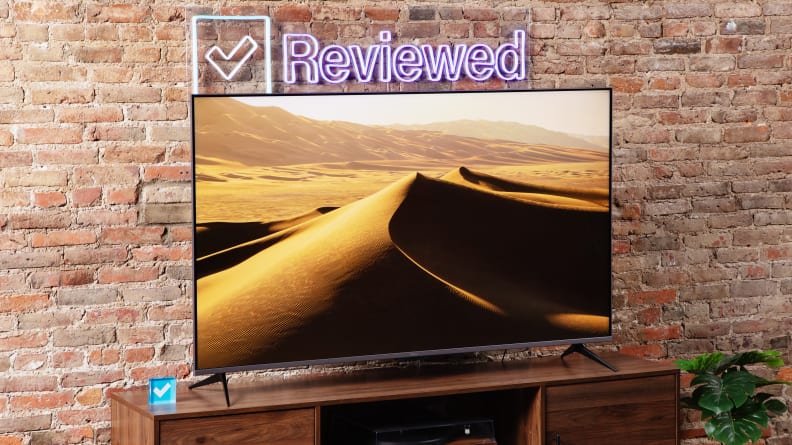
Credit:
Reviewed / Timothy Renzi
The Roku Plus Series is decent, but you might want to explore more before deciding to purchase.
The Roku Plus Series QLED is a great way for tech-shy streamers to upgrade their living room on a budget. If you’ve ever wished you could set aside technological jargon and buy a simple, decent TV for a reasonable price, the Plus Series is a good place to start your search. It’s not the first TV to emphasize simplicity above all else, but thanks to its excellent software and even-keeled performance, it’s one of the better such options on the market today.
If you’re looking to squeeze as much performance-related upside as possible out of a TV in this price range, the Hisense U7H might be more your speed. It’s got some picture processing quirks of its own, but it makes up for them with sensational contrast, brighter HDR highlights, and a bevy of gaming-related features typically reserved for pricier TVs. We prefer the Roku smart platform over the U7H’s Google-based software, but Google TV is nevertheless a great option for daily streaming.
When price, performance, and features are all taken into consideration, the TCL 5-Series is the Plus Series’ closest competitor. It even offers a near-identical software experience, too, since it also runs on the Roku operating system. The 5-Series’ inclusion of Variable Refresh Rate and lower input lag make it a slightly better gaming option than the Plus Series, and based on what I’ve seen, it does a slightly better job upscaling sub-4K content. If you’re choosing between the two and the 5-Series is more affordable, I’d be inclined to go with the 5-Series.
Roku’s first TV succeeds in its primary endeavor: to be an easy, fuss-free option for anyone in need of an affordable living room upgrade. It’s a bit rough around the edges, but then again, most TVs in this price range are similarly shaggy. You can get more bang for your buck, but if you just need to buy a decent TV so you can finally stop thinking about it, the Plus Series will get you streaming in no time.

Roku 55-inch Plus Series QLED TV
Roku’s first TV, the Roku Plus Series QLED TV, makes it easy to set up and stream content and provides bright, colorful picture.
The product experts at Reviewed have all your shopping needs covered. Follow Reviewed on Facebook, Twitter, Instagram, TikTok, or Flipboard for the latest deals, product reviews, and more.
Prices were accurate at the time this article was published but may change over time.
Meet the tester
Michael Desjardin graduated from Emerson College after having studied media production and screenwriting. He specializes in tech for Reviewed, but also loves film criticism, weird ambient music, cooking, and food in general.
Checking our work.
Our team is here for one purpose: to help you buy the best stuff and love what you own. Our writers, editors, and lab technicians obsess over the products we cover to make sure you’re confident and satisfied. Have a different opinion about something we recommend? Email us and we’ll compare notes.











